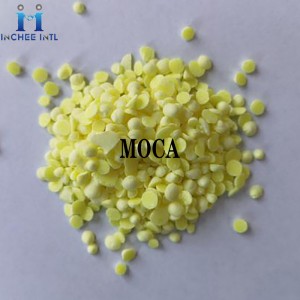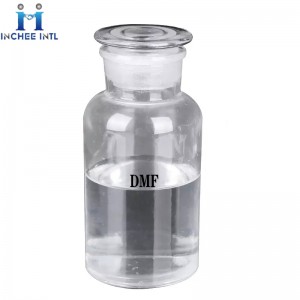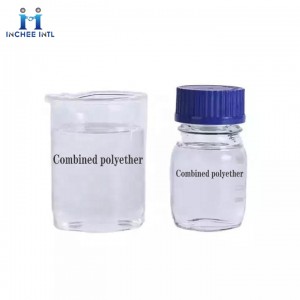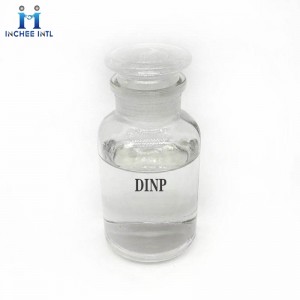-

Manufacturer Good Price MOCA II (4,4’-Methylene-bis-(2-chloroaniline) CAS: 101-14-4
4,4′-Methylene bis(2-chloroaniline), referred to as MOCA, is an organic compound with the chemical formula C13H12Cl2N2. MOCA is mainly used as a vulcanizing agent for casting polyurethane rubber and a crosslinking agent for polyurethane coating adhesives. MOCA can also be used as a curing agent for epoxy resins.
CAS: 101-14-4
-

Manufacturer Good Price SILANE (A171) Vinyl Trimethoxy Silane CAS: 2768-02-7
Vinyltrimethoxysilane, is used as a polymer modifier via grafting reactions. The resulting pendant trimethoxysilyl groups can function as moisture-activated crosslinking sites. The Silane grafted polymer is processed as a thermoplastic and crosslinking occurs after fabrication of the finished article upon exposure to moisture.
CAS: 2768-02-7
-

UOP GB-562S Adsorbent
Description
UOP GB-562S adsorbent is a spherical metal sulfide adsorbent designed to remove mercury from gas feed streams. Features and benefits include:
- Optimized pore size distribution leading to higher surface area and longer bed life.
- High degree of macro-porosity for rapid adsorption and short mass transfer zone.
- Customized active metal sulfide for a ultra-low level impurity removal.
- Available in steel drums.
-

Manufacturer Good Price N,N-DIMETHYLFORMAMIDE(DMF) CAS 68-12-2
N,N-DIMETHYLFORMAMIDE is abbreviated as DMF. It is a compound generated by the substitution of the hydroxyl group of formic acid by a dimethylamino group, and the molecular formula is HCON(CH3)2. It is a colorless, transparent, high-boiling liquid with a light amine odor and a relative density of 0.9445 (25°C). Melting point -61 ℃. Boiling point 152.8 ℃. Flash point 57.78 ℃. Vapor density 2.51. Vapor pressure 0.49kpa (3.7mmHg25 ℃). The auto-ignition point is 445°C. The explosion limit of vapor and air mixture is 2.2 to 15.2%. In case of open flame and high heat, it may cause combustion and explosion. It can react violently with concentrated sulfuric acid and fuming nitric acid and even explode. It is miscible with water and most organic solvents. It is a common solvent for chemical reactions. Pure N,N-DIMETHYLFORMAMIDE is odorless, but industrial-grade or spoiled N,N-DIMETHYLFORMAMID has a fishy smell because it contains dimethylamine impurities.
CAS: 68-12-2
-

UOP GB-280 Adsorbent
Description
UOP GB-280 adsorbent is a robust adsorbent designed to remove sulfur compounds from hydrocarbon streams.
-

Manufacturer Good Price DMTDA CAS:106264-79-3
DMTDA is a new type of polyurethane elastomer curing cross-linking agent, DMTDA are mainly two isomers, 2,4- and 2,6-dimethylthiotoluenediamine mixture (the ratio is about Chemicalbook77~80/17 ~20), compared with the commonly used MOCA, DMTDA is a liquid with lower viscosity at room temperature, DMTDA can be suitable for construction operations at low temperature and has the advantages of low chemical equivalent.
CAS: 106264-79-3
-

Manufacturer Good Price Combined polyether CAS:9082-00-2
Combined polyether is one of the main raw materials of polyurethane hard bubbles, also known as white material, and is called black white material with polymer MDI. It is composed of a variety of components such as polyether, uniform foaming agent, linked agent, catalyst, foaming agent and other components. It is suitable for various occasions that need to keep insulation and preservation of cold insulation and cold.
Combined polyether CAS:9082-00-2
Series:Combined polyether 109C/Combined polyether 3126/Combined polyether 8079CAS: 9082-00-2
-

Manufacturer Good Price DINP CAS:28553-12-0
DINP:Diabenate (DINP) is a transparent oily liquid with a mild odor. This product is a universal main -added plasticizer with excellent performance. This product and PVC are similar to that, even if they are used in large quantities; volatile, migration, and non -toxicity are better than DOP, which can give the product with good Chemicalbook light resistance, heat resistance, aging resistance and electrical insulation performance, excellent comprehensive performance, and excellent comprehensive performance DOP. Because the products produced by dihydrodinate of phthalate have good water resistance, low toxicity, aging resistance, and excellent electrical insulation, they are widely used in various soft and hard -hard plastic products, toy film, wires, and cables.
CAS: 28553-12-0
-

Manufacturer Good Price Methylene Chloride CAS:75-09-2
Methylene Chloride is a compound generated by two hydrogen atoms in methane molecules, and molecular CH2CL2.Methylene Chloride is colorless, transparent, heavier, and volatile liquid. It has a smell and sweetness similar to ether. It does not burn. Methylene Chloride is slightly soluble in water, and it dissolves with most commonly used organic solvents. It can also be dissolved in any proportion with other chlorine-containing solvents, ether, ethanol, and N-di metamimamamide. Methylene Chloride is difficult to dissolve in liquid ammonia at room temperature, which can be quickly dissolved in phenol, aldehyde, ketone, triathrin, tororine, cycamine, acetylcetate. The phase Chemicalbook is 1.3266 (20/4 ° C). The melting point -95.1 ° C. Boiling point 40 ° C. Fully low -boiling point solvents are often used to replace flammable petroleum ether, ether, etc., and can be used as local anesthesia, refrigerant and fire extinguishing agent. The spontaneous combustion point is 640 ° C. Decoction (20 ° C) 0.43MPa · s. The refractive index nd (20 ° C) 1.4244. Critical temperature is 237 ° C, and critical pressure is 6.0795MPa. HCL and traces of light are generated after thermal solution, and the water is heated for a long time to generate formaldehyde and HCL. Further chloride, CHCL3 and CCL4 can be obtained.
CAS: 75-09-2
-

Manufacturer Good Price Alpha Methyl Styrene CAS 98-83-9
2-Phenyl-1-propene, also known as Alpha Methyl Styrene (abbreviated as a-MS or AMS) or phenylisopropene, is a by-product of the production of phenol and acetone by the cumene method, generally a by-product of phenol per ton 0.045t α-MS.Alpha Methyl Styren is a colorless liquid with a pungent odor. The molecule contains a benzene ring and an alkenyl substituent on the benzene ring.Alpha Methyl Styren is prone to polymerization when heated. Alpha Methyl Styren can be used in the production of coatings, plasticizers, and as a solvent in organic.
Alpha Methyl Styrene is a colorless liquid. Insoluble in water and less dense than water. Flash point 115°F. May be mildly toxic by ingestion, inhalation and skin absorption. Vapors may be narcotic by inhalation. Used as a solvent and to make other chemicals.
CAS: 98-83-9






